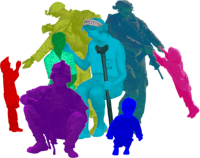Child trafficking and human slavery are not isolated issues that affect only a specific group of people or regions. They are pervasive crimes that infiltrate every level of culture and society, impacting individuals, communities, economies, and nations worldwide. To effectively combat these heinous acts, it is crucial to recognize that everyone is a stakeholder in this fight. By understanding the interconnectedness of these issues, we can mobilize collective action to eradicate them.
Every person has an inherent responsibility as part of humanity’s collective conscience—to stand against child trafficking & human slavery actively—and contribute towards creating safer environments free from exploitation globally!








